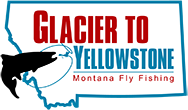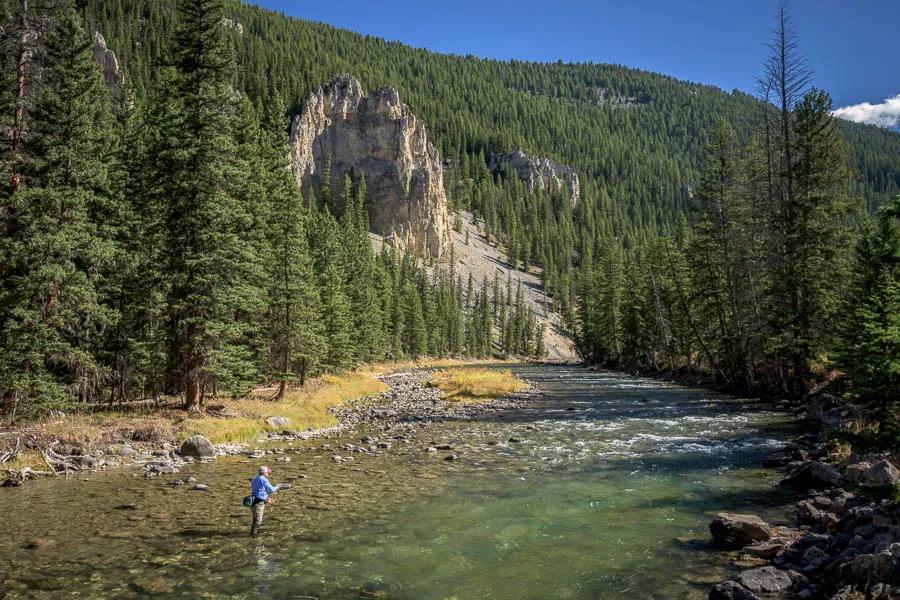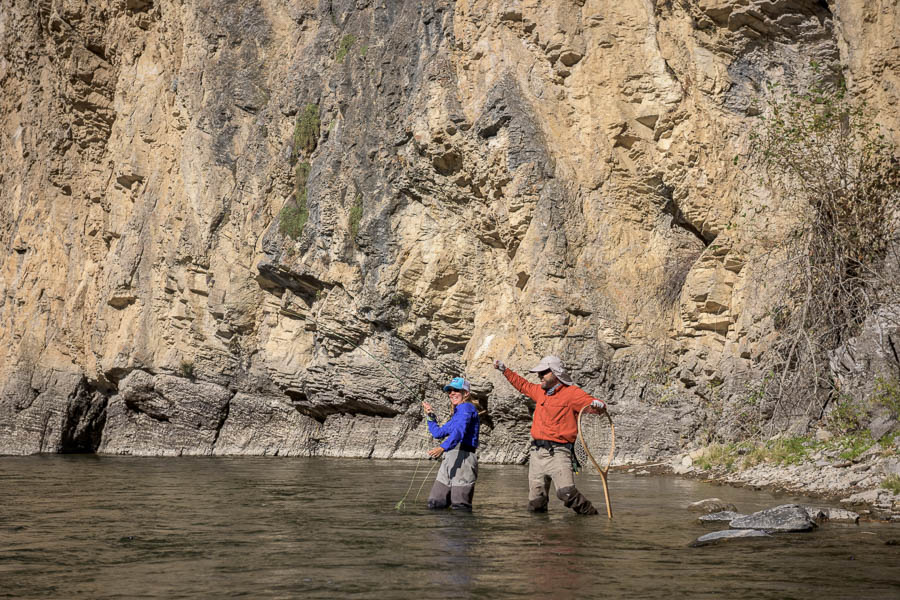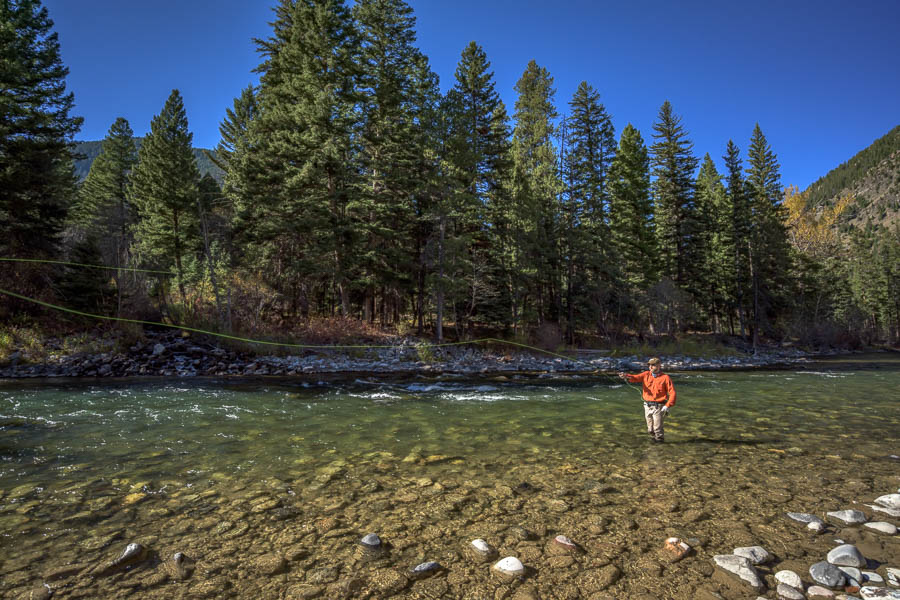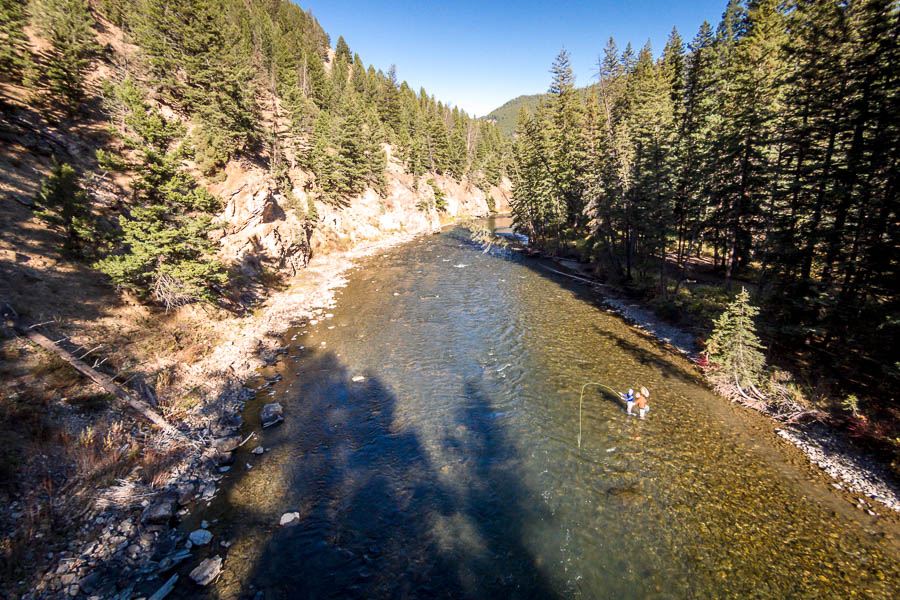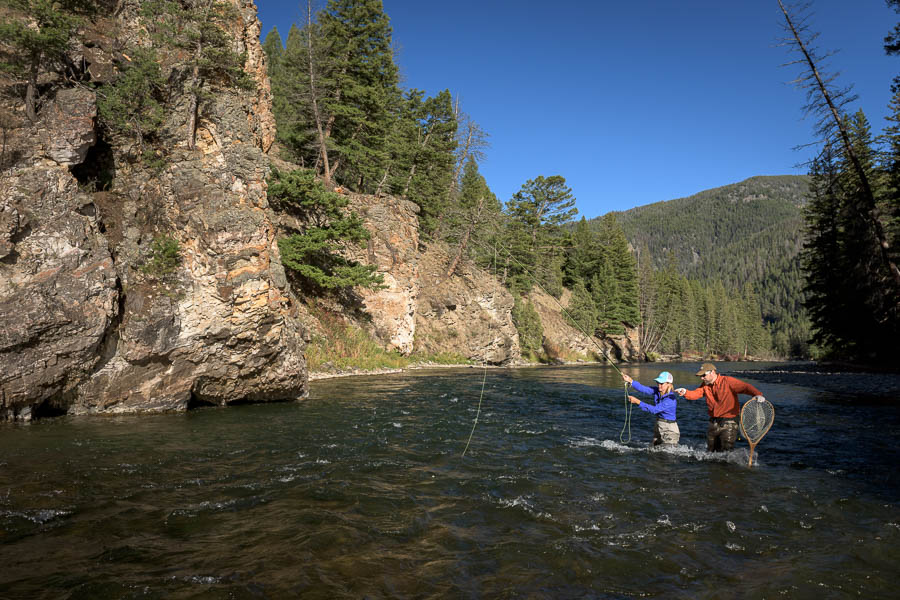Gallatin River Fishing Overview
Made famous by the movie "A River Runs Through It", the Gallatin is one of Montana's most well known rivers. For much of its length, the Gallatin is confined by high canyon walls. Float fishing is prohibited on the Gallatin from the Yellowstone Park boundary to the East Gallatin River. The only section open to float fishing is from the East Gallatin River down to Logan Bridge on Highway 205 or further down to Missouri Headwaters State Park. The Gallatin during spring run-off challenges floaters with Class III and IV whitewater. If you are going to float even during the summer, I would recommend buying the Gallatin River, Montana Afloat map which may be purchased in any fly shop throughout western and southwestern Montana. It would also be prudent to stop by one of the local fly shops in Bozeman or the Gallatin Valley for up to date river information.
About fifty years ago, I picked up my father's South Bend fly rod. I had no use for a tapered leader. Four feet of stout monofilament attached to an Eagle Claw hook with garden hackle or a salmon egg was all I needed. Carrying an old set of rusty pliers and a pill box of split-shot, I was ready to meet the challenges of the day. Steep timbered mountains, towering crags and the fluttering silver dollars on aspen trees imprinted my boyhood with a transcendentalist view of nature. The Gallatin is equally inspiring.
Unlike the Madison River, which is surrounded by bench land sage brush, the Gallatin, as it flows through the canyon section, inspires that same boyhood sense of wonderment. The Gallatin River from the Park boundary to Taylor Creek primarily holds small rainbows. Still resembling a creek, the water is easily waded and easily assessable with many pull-outs along the highway.
Taylor Creek is renown for adding sediment up the river. Spring run-off "generally" subsides the last week of June. From Taylor Creek to the West Fork of the Gallatin, and the junction with Big Sky Resort, harbors an astounding number of 10 to 12 inch rainbows with estimates from 3,000 to 5,000 per mile! This section can only be described as just fun fishing. Drive along the river and pick the type of water you enjoy fishing. Riffles, pockets, pools and boulder-strewn sections provide a diversity of habitat for both dry fly fishermen, nymph fishermen and spin fishermen.
The best part of this fun fishing is the fact that the fish readily rise to attractor patterns in the fast waters. Leaving the red sandstone cliffs and the canyon behind, the Gallatin enters agricultural bottom land. Heavily agriculture use leaves a scarcity of water in some parts of the braided bottom land. Access is difficult with the exception of public bridge crossings which are numerous above and below Four Corners. Be sure to stay under the high-water mark, and you are perfectly legal. During the heat of summer, this section is difficult to fish with the exception of pools and banks which often hold good size browns. If you are visitor with a limited time to fish, skip this section of water. From the Logan Bridge on Highway 205 at the junction with Logan-Trident Road to Missouri Headwaters State Park, the river is open to float fishing. This is an especially popular section during the fall for spawning runs from the Missouri River.
Guided Fishing Trips on the Gallatin River
River description by David Archer
